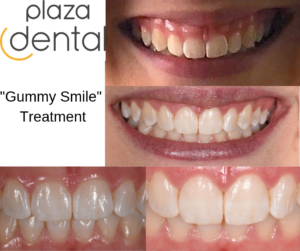It is all about embracing novel materials, according to the experts and those chronicling the changes. In the never ending tussle between conservatives and progressives, here in the dental sphere it is very much about innovation over tradition. Technology leads on, advancing composite material turnarounds in just 35 minutes being a crowning achievement. The fact that these new hybrid composites can be created in just over half an hour versus the 14 hours baking time for zirconium is a massive production time advantage. Meeting the increasing demand for high quality restorations will be well served by this advancement via these materials and technologies.
High Quality Crown Restorations Can Be Created In Just over Half An Hour
Expediency can never be underrated in any production process. Innovation is most often associated with speeding things up in tandem with increasing the overall quality of the product or service. Dentistry has always had an integral relationship with the materials and instruments used in its procedures and treatments. Without these things dental care is blowing in the wind and unable to fulfil its remit. It is exciting for dental clinics everywhere that when new technical advancements become possible. In an expensive business like dentistry if you can deliver an exceptional product with much greater efficiency it generally equates to greater profitability.
“This depends entirely on the indication! Indeed, the CAD/CAM composite blocs currently available on the market bring with them a number of excellent material properties. In many cases it is possible to create visually attractive results from this flexible material in virtually no time. You can completely eliminate long sintering or crystallising of other dental materials. After roughly 35 minutes, the milling machine produces virtually finished crowns, partial crowns, inlays, onlays or veneers. Due to the high intrinsic gloss of high-performance composites such as Brilliant Crios, you only need to perform brief polishing. This allows fabrication of a top quality restoration within one hour.”
– Dr. Nicolas Rohde, Head of Digital & International Division at DT&SHOP, and dental technician Manfred Bildhäuser
What Is A Crown?
“A dental crown is a tooth-shaped cap. Dentists use crowns to restore weak, broken or decayed teeth. A crown fits over your entire tooth, like a snug hat. To ensure a proper fit, a dentist will need to remove a small amount of enamel before bonding your new crown in place. Dental technicians craft crowns from a variety of materials, including resin, metal and porcelain.”
– My Cleveland Clinic
Banging Out Brilliant Crowns For Better Outcomes
In Australia, dentists can charge what they like for procedures. It is a free market economy and, therefore, although no strictures around prices for procedures the market can influence what individual dental clinics charge. As a rough guide metal crowns are done for between $1,200 & $1,500, ceramic crowns $1,200 & $2,000, zirconium $1,500 & $2,500. Yes, there are mitigating factors which may make some procedures more complicated and more expensive on this basis.
Dr. Rohde: “If the dentist uses a CAD/CAM device in the practice, they can produce and fit a crown within an hour during the same session. The patient avoids the need for a second session and appreciates the immediate treatment. Also in the laboratory, production only takes one hour, in other words: the patient can have his dentures a few days later which is still considerably faster than in the past.”
– Dental News

What About Zirconium?
Is there a comparable slow food movement in dentistry? Could slow and steady actually win the race when it comes to dental care? Is, perhaps, all this rushing around just other folk and companies wanting to make money from the golden goose? Is faster always better? Convenience always an advantage over the alternative? We live in an age totally enamoured of technological innovation at whatever the cost it seems.
Zirconia, according to its proponents, is the best material for CAD/CAM manufacturing. This is because it is formed into void-free solid blocks, which can be milled into precise shapes. Zirconia stands alone without the need to bond with any other substance and is, therefore, strong and stable on this basis.
“Once the shape is formed, it is baked at ultra-high temperatures to produce a finished crown that is nearly indestructible.”
– Stoma Dental Lab
The disadvantages of zirconia, apart from the 14 hour production time, have been limits in aesthetic appearance options. Bone white was the only option for zirconium crowns for a long time. This issue has been solved via layering techniques utilising altered zirconia formulations or porcelain to hide the underlying monolithic zirconia base. Another problem over the duration with zirconium crowns has been the wear on opposing teeth because of the hardness of this material versus natural teeth. This has, apparently, been minimised via refinements to the technology.
The Metal Crown Bling
Perhaps, the most famous metal crowns popularised in the media was Jaws in the Bond movies.
“Broccoli originally hired John Chambers to make the teeth; however, these were not used, as they did not meet Broccoli’s standards. Broccoli then sent Kiel to Peter Thomas, a dental technician who worked near Pinewood Studios, to construct the appliances. Kiel stated the props were uncomfortable for him and he could only wear them for less than one minute before gagging. After shooting a scene, the teeth were placed in a plastic container with cotton wool in the bottom of it and the teeth were rinsed with mouthwash before drying for use in the next scene.”
– Wikipedia
Although the metal teeth used in the Bond movie were not truly metal crowns they have inspired a celebrity fashion for bling in the mouth. Pop stars and celebrities are adorning their teeth with gems and jewellery. Kanye West is, perhaps, the most famous metal teeth man of the moment.
“West, who legally changed his name to Ye, turned heads on Wednesday when he took to Instagram to show off his metal implants, comparing himself to the James Bond villain Jaws, who had similar metal teeth.
Dr Connelly gushed over working with the rapper, describing the Grammy winner’s design process.
“Ye was a pleasure to work with every step of the process.”
– News.com.au
It seems that there are two distinct driving trends in the crown business. One is the desire to replace broken teeth with the most natural looking restoration. The other is to go completely the other way and draw maximum attention via bling or shiny metallic surfaces. Dentists are servicing both of these inclinations with the very best crowning materials possible. The news of the day is that advancing composite material turnarounds in just 35 minutes is now possible or just around the corner.








Share this post
Facebook Twitter LinkedIn